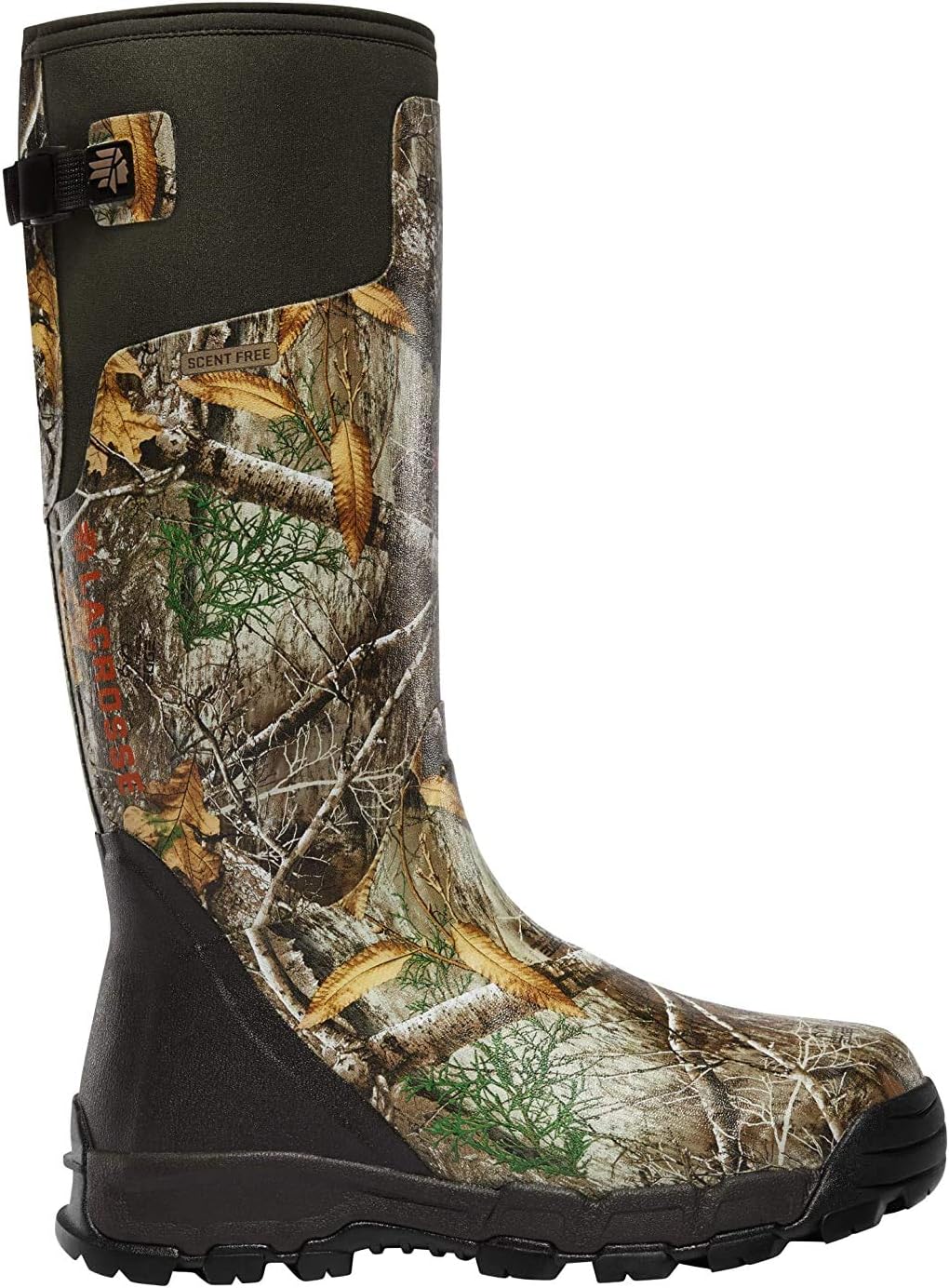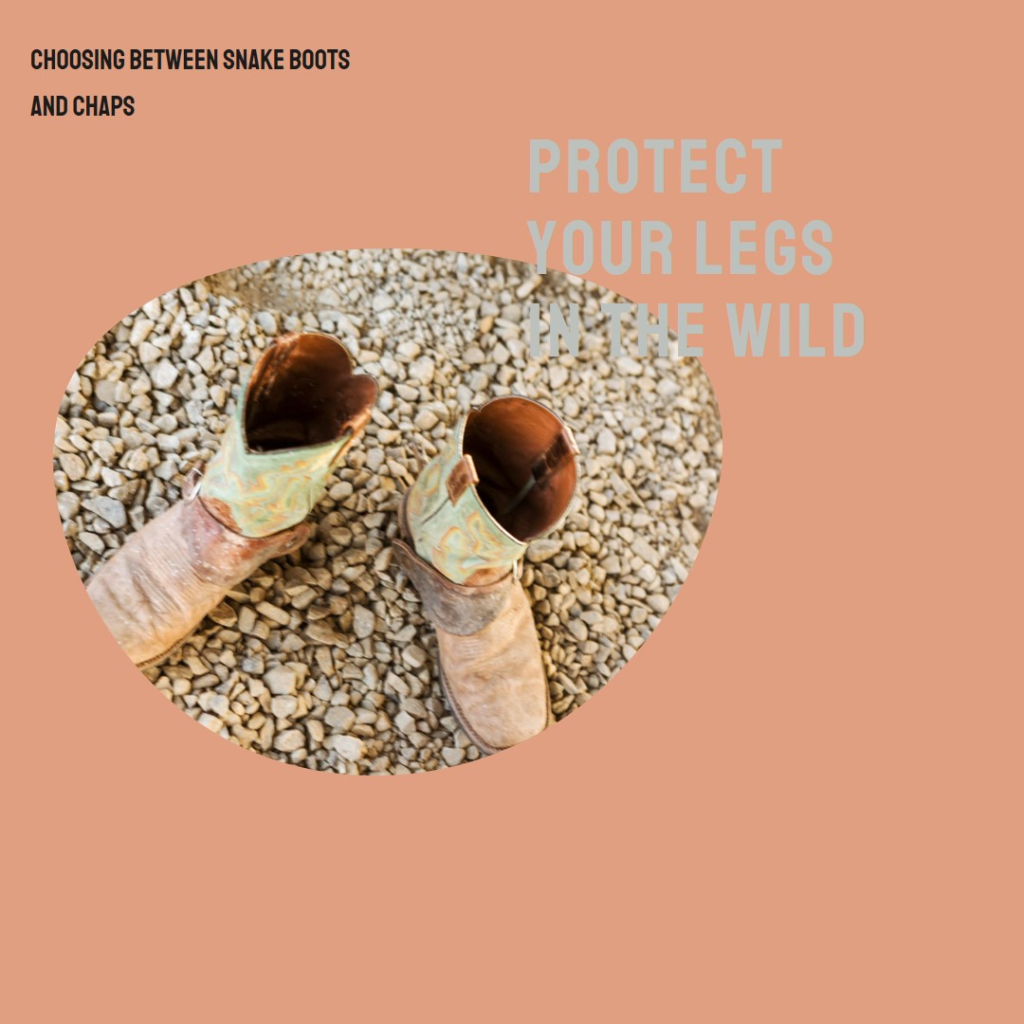For people who work or recreate in areas home to venomous snakes, having reliable protective garments can provide peace of mind. Snake bites are a painful and potentially deadly hazard. Poison injected can cause tissue damage, hemorrhaging, paralysis, or even death if not treated quickly with antivenom.
When it comes to guarding your lower legs and feet against snake fangs and strikes, two of the most popular gear options are snake boots and snake chaps. But how do you choose between them? What are the differences in protection and functionality?
This guide will compare snake boots and chaps across several factors to help determine which solution may be right for your unique risks and usage.
Key Differences and Considerations
Snake Boots
LaCrosse Alphaburly Pro Hunting Shoe

- Neoprene/rubber boot locks out water completely
- Embossed liner increases air circulation
- Realtree MAX-5 camo pattern hides from birds
- Hand-laid premium rubber over 3.5mm neoprene
Coverage Area
The most obvious variation between snake boots and chaps is the body coverage provided:
- Snake boots are tall boots usually reaching 16+ inches. They fully encase both the foot and the entire lower leg.
- Snake chaps only cover the front of the leg using durable material overlays. The back of the calf and hamstring are left exposed with only mesh or straps across the opening.
So chaps do not provide 360-degree protection like snake boots. However, they offer ventilation and mobility advantages in hot weather compared to tall enclosed boots.
Snake chaps
TREKMASTER Snake Guard Chaps for Hunting

- REKMASTER snake chaps provide exceptional protection against all North American venomous snakes. Specifically engineered to safeguard outdoor enthusiasts from snakes like copperheads and cottonmouths, these snake-proof gaiters offer peace of mind in snake country.
Ease of Movement
Due to their tight enclosed fit and extended height, snake boots tend to restrict movement more than chaps. Chaps only have material coverage in front of the leg, allowing greater airflow and range of motion.
However, chaps must be worn with appropriate high-top boots or shoes that also cover the ankle and foot. So you have to account for the combined flexibility of both components.
Protection Levels
Both snake boots and chaps utilize tough, puncture-resistant materials designed to withstand snake fangs. Common materials include thick-treated leather or ballistic nylon layers. Some models also incorporate woven fiberglass for extra strength.
Top-end snake boots typically provide Level II or III protection, certified to stop strikes from vipers, rattlesnakes, and even large vipers. Snake chaps generally offer Level I or basic protection, which may stop smaller vipers but not large heavy-bodied snakes and rattlesnakes.
So full snake boots intrinsically offer a higher level of protection than chaps alone. However, pairing chaps with cowboy boots also boosts safety.
Weather Suitability
Snake boots tend to be hotter to wear and less breathable than snake chaps. Especially in warmer weather, having your entire lower leg encased can lead to sweaty discomfort.
Chaps offer much better air ventilation and cooling from having the backs of your legs exposed. This makes them preferred for high-temperature climates. Paired with a lightweight boot, chaps allow good air circulation.
That said, snake boots provide insulation in colder weather along with keeping out water and mud. Chaps leave the back of your calf and ankles more exposed.
Cost Differences
You’ll also see variations in prices between snake protection types:
- Snake boots range widely in cost from $80 to $350+ depending on materials, brands, and features. High-end custom exotic leather or snakeproof hunting boots are the most costly.
- Snake chaps average $60 to $120 based on protection levels, brands, and sizes. Most decent Level I chaps start around $75.
So while snake boots cost more upfront, they include integrated foot/ankle coverage. With chaps, you’ll also need to budget for heavy leather boots or sturdy work shoes to wear them with.
Leading Brand and Models
Now that we’ve compared the tradeoffs, let’s take a look at some top-recommended snake boots and chaps…
Snake Boots
- Chippewa Snake Boots – $220-$300
- Danner Pronghorn – $230-$280
- Muck Woody Max – $150-$200
- Rocky ProHunter – $150-$180
- Irish Setter Havoc – $180-$220
Snake Chaps
- Kenetrek Snake Guards – $85
- Mountain Made Snake Chaps – $100
- Forester Snake Chaps – $60-$80
- Redwing Snake Chaps – $100
- Cactus Chaps – $70-$90
I’ve highlighted some popular and trusted brands to give you an idea of price ranges. Most major work boot companies now offer both snake boot and snake chap versions catered to protection needs while out in the field.
Snake Bite Safety Comparison
To sum up the main differences in protection between snake boots and chaps, review this comparison table:
| Metric | Snake Boots | Snake Chaps |
|---|---|---|
| Body Coverage | Fully encloses foot & leg | The back of leg exposed for airflow |
| Protection Level | Up to Level III certified | Typically Level I to minor vipers |
| Ventilation | Hotter, less breathable | Decent when paired with boot/shoe |
| Weather Suitability | Warmer in cold weather | Better for hot weather |
| Movement Freedom | Restricted due to tall enclosed fit | Decent when paired boot/shoe |
| Cost | $100 to $350+ | $60 to $120 (no footwear included) |
Matching Risks and Usage Scenarios
Determining whether to invest in a dedicated pair of snake boots or snake chaps ultimately comes down to:
- Your risk levels in regions with venomous snakes
- Most common terrain and weather during use
- Expected mobility and flexibility needs
- Affordability and budget considerations
Here are some scenarios where one solution may be preferred over the other:
Best Suited for Snake Boots
- Frequent exposure in areas with many large vipers – Need Level 3 protection
- Working in dense brush and tall grass – Need shin/calf coverage
- Cold weather and wet conditions – Need insulation and waterproofing
- On uneven terrain requiring ankle support – Rely on integrated footwear
Best Suited for Snake Chaps
- Hot/humid weather work – Need ventilation to stay cool
- Requires lots of bending, kneeling, crouching – Favor flexibility
- Only small vipers present – Level 1 protection suffices
- Budget-conscious buyers – Less costly than quality snake boots
As you can see, carefully weighing your unique hazards, environment, and tasks can dictate which protective garment fits best. Snake boots offer maximum safety but less comfort and mobility. Snake chaps provide solid basic protection with airflow and freedom of movement emphasized instead.
Care Tips to Maximize Durability
Caring properly for snake boots or chaps ensures they last for years protecting you from fang strikes. Here are some usage and storage tips:
- Inspect gear periodically for cracks, holes, or separating seams
- Clean off soil, oil, and animal fluids after each use
- Apply leather conditioner to uppers if made of treated leather
- Use washable cotton liners to absorb inner moisture and smells
- Fill boots with crumpled paper to hold shape if storing long-term
- Allow sweat-damped items to fully air dry before putting them away
- Store in a clean, dry location away from rodents that may chew leather
Following these basics allows your snake protection equipment to maintain integrity. Always inspect before wearing and replace anything overly worn or damaged.
Conclusion
Snakebite protection requires specialized clothing when working or playing in areas home to venomous serpents. Snake boots and snake chaps both provide functional defense but differ across the coverage area, breathability, and cost factors.
Snake boots deliver maximum safety enclosing the lower legs and feet completely. But they sacrifice ventilation and ease of movement in return. Snake chaps only wrap the forward shin area, remaining cooler in hot environments. Just verify the chap rating matches your actual snake bite dangers.
Assess your specific exposure levels, climate, and budget to decide between dedicated snake-proof boots or snake chaps paired with separate footwear. Either solution gives reliable protection to avoid hospitalization or worse from accidental snake strikes. Stay safe from fang bites without sacrificing comfort no matter which style you choose.
Read More Articles
- Men’s Orthopedic Warm Snow Boots With Waterproof And Non-Slip Features for Winter
- Black Python Boots to Buy in 2024: A Comprehensive Guide
- The Complete Guide to Boot Wraps for Jeans
- The Ultimate Guide to Anteater Boots in 2024
- Boot Straps for Cowboy Boots: Elevating Style and Functionality
- 6 Inch vs 8 Inch Boots: A Comprehensive Guide for Boot Enthusiasts

More Stories
The Ultimate Guide to Anteater Boots in 2024
Magellan Snake Boots Review 2024: Effective Protection from Venomous Bites
Snake Gaiters vs Snake Boots: Which is Better for Hiking & Outdoors?